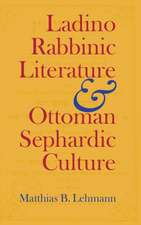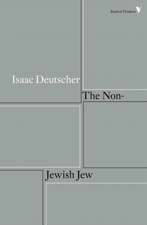Abyss of Despair
Autor Nathan Hanoveren Limba Engleză Paperback – 30 ian 1983
Preț: 406.59 lei
Nou
Puncte Express: 610
Preț estimativ în valută:
77.81€ • 80.74$ • 65.04£
77.81€ • 80.74$ • 65.04£
Carte tipărită la comandă
Livrare economică 17-31 martie
Preluare comenzi: 021 569.72.76
Specificații
ISBN-13: 9780878559275
ISBN-10: 0878559272
Pagini: 150
Dimensiuni: 156 x 234 x 13 mm
Greutate: 0.23 kg
Ediția:1
Editura: Taylor & Francis
Colecția Routledge
Locul publicării:Oxford, United Kingdom
ISBN-10: 0878559272
Pagini: 150
Dimensiuni: 156 x 234 x 13 mm
Greutate: 0.23 kg
Ediția:1
Editura: Taylor & Francis
Colecția Routledge
Locul publicării:Oxford, United Kingdom
Cuprins
Illustrations Translator's Note Foreword to the Transaction Edition Translator's Introduction The Life and Work of Nathan Hanover Author's Introduction I. Abyss of Despair II. The Massacres of Nalevaiko III. The Massacres of Pawliuk IV. The Brutal Oppressions of Chmiel V. The Massacres of Nemirow VI. The Massacres of Tulczyn VII. The Massacres by Polannoe VIII. The Massacres of Ostrog and Zaslaw IX. The Massacres of Konstantynow X. The Massacres of Lithuania XI. The Massacres of Bar XII. The Massacres of Lwow XIII. The Massacres of Narol XIV. The Massacres of Zamosc XV. The Second Massacre of Ostrog XVI. The Inner Life of the Jews in the Kingdom of PolandXVII. Notes
Descriere
Providing a gripping, first-hand account of the Chmielnicki massacres in 1648-58, in which tens of thousands of Jews perished in Poland and the Ukraine, Rabbi Nathan Hanover describes the events themselves and their effect on European Jewry. Hanover's description of the atrocities commited* by Chmielnicki and his hordes makes it clear that they set the precedent for Hitler's torture chambers. Hanover's account of the events understood in their historical context 'shows how humans can transcend tragedy and rebuild their lives, developing new ways to express their heritage and culture. Professor Helmreich, in his new introduction, describes the- period of relative peace and prosperity for the Jews immediately preceding the massacres. He traces some of the important effects the massacre had on later Jewish history, such as the rise of Messianic and Hasidic movements in the seventeenth and eighteenth centuries and the migration of Jews back toward the west, where they were situated when the Enlightenment swept through Europe.












